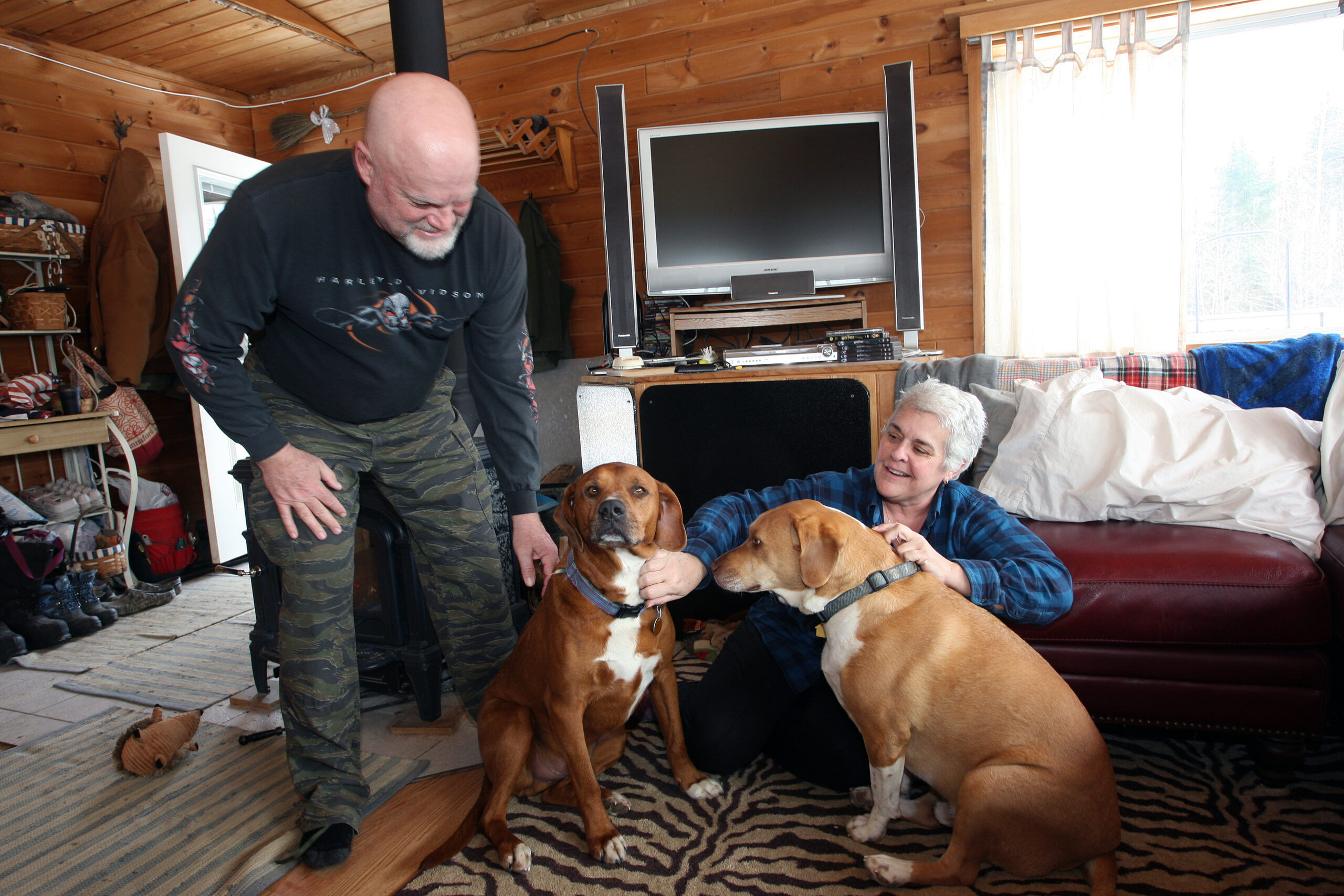
CARY PLANTATION, Maine — Kai and Tina Libby’s two pet dogs have been known to kill an animal or two on their large rural property.
So when Tina Libby said let the two out on the morning of Feb. 28, she was not surprised when the two hound-mix dogs, Rosco and Dopey, caught something. Dopey was a rescue from Delaware, while Rosco came from a shelter in Georgia.
“I got the binoculars and took a look,” she said. “I called for Rosco and he came in, but Dopey did not. He usually wants us to see what he has caught so he can be proud of it.”
Tina said she grabbed a shovel, and found the two animals had killed a raccoon. The carcass was still warm, so she knew they had not simply found a dead animal.
“Rosco had some scratches and a wet spot on his chest,” Tina said. “But there was no blood, so I didn’t think too much about it.”
Tina said she took a picture of the dead raccoon and sent it to her husband, who was out of town at the time. He immediately called her and told her to call a Game Warden, who asked her to bag the animal and bring it to the Maine State Police Troop F barracks in Houlton.
The following day, she learned the raccoon had tested positive for rabies and she immediately called her veterinarian. Although both dogs were up to date on their vaccinations, they needed to have additional shots to protect them.
At that point, Tina said she made the decision to have herself checked at the hospital because while she was cleaning up the wet spot on Rosco, she failed to notice at the time that she had an open cut on her hand.
“Since we didn’t know if it was saliva or just snow, I didn’t want to take any chance,” she said. “Rabies can be passed along through blood, saliva or brain matter.”
“Rabies is a horrible disease and once it starts, there is no treatment, just a slow a painful death,” Kai added.
Tina said she has to go through a painful and expensive series of four shots (one in each arm and leg), in addition to a rabies vaccine near her hand. She had to return three additional times for more booster shots.

Rosco, left, and Dopey are two hound-mix rescue dogs that belong to Tina and Kai Libby of Cary Plantation. The two canines caught and killed a raccoon Feb. 28 that tested positive for rabies.
(Joseph Cyr)
Both dogs were quarantined for 45 days and could have no contact with other dogs.
According to Katie Spencer, manager of Media Relations for the Maine Department of Health and Human Services, it is the first confirmed case of rabies in Aroostook County for 2018.
Statewide, however, that number is much higher.
“We are seeing slightly higher numbers of confirmed rabid animals, with 12 rabid animals so far this year (as of April 10),” Spencer said Friday. “Our epidemiologists investigate every positive animal tested at the Maine Health and Environmental Testing Laboratory and make recommendations as appropriate for any exposed individuals and domestic animals.”
Maine has been beset with rabies cases among wild animals and pets during the past two years. In 2015, 33 cases were reported statewide, compared to 76 cases in 2016 and 67 last year.
Spencer offered the following tips for people in case they come in contact with an animal acting strangely.
“If someone suspects a wild animal is rabid, they should call a Maine Inland Fisheries and Wildlife game warden,” she said. “If it is a domestic animal, the individual should notify the town Animal Control Officer.”
“Rabies can present in different ways,” she said. “So it is important to understand that not every rabid animal is ‘foaming at the mouth.’ Any behavior that seems inconsistent with what would be expected, including overly aggressive behavior or lack of fear of humans, is cause for concern. If there are concerns about suspected rabid animals, the responders should be called.”
If a person or a domestic animal has possibly been exposed, call Maine CDC at 1-800-821-5821 for consultation.
“They should visit a veterinarian for appropriate follow-up and notify the Animal Control Officer,” Spencer said. “Depending on whether the pet has been previously vaccinated against rabies, follow-up may be different.
For additional information, visit: http://www.maine.gov/dhhs/mecdc/infectious-disease/epi/zoonotic/rabies/







